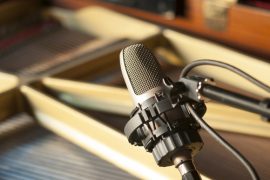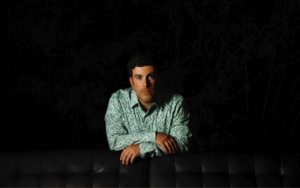
Here’s What You Need To Record Music At Home
Maybe you’re like me, and you’ve decided to re-examine your DIY home recording studio. After a long break and some New Year’s resolutions about keeping focused on my art, I reviewed my list of essential gear and got to work.
Some of it came back to me like riding a bike. Some of it (like Pro Tools) did not! Which brought me, of course, to YouTube, searching for online tutorials — where I found a video that appealed to me for completely different reasons…
Part of the beauty of recording in a small home studio (mine is basically just a bedroom filled with gear) is that you can use limitations to your advantage. So I’ve been obsessing lately over the basics, wanting to break my gear, my signal path, and my creative process down to something that allowed for quick tracking and decision making. Because of course, I wanted to have great sounding audio, but I didn’t want things to get expensive!
One of the “back-to-basics” videos I came across was by producer and audio engineer Graham Cochrane (who runs the Recording Revolution blog and video series). In the video below he does a great job explaining what gear you need, what gear you don’t need, and why.
A couple days after I watched the video, Graham wrote a guest post for the Echoes Blog on the exact same topic. Strange connections! Anyway, I thought I would summarize his points below.
What do I need to record music at home?
Here’s a list of the essentials you’ll need to build your recording studio at home. You might want more, but you’ll almost certainly not want anything less than these.
-
A good computer, with lots of RAM
-
Any DAW (digital audio workstation)
-
A solid audio interface
- Focusrite Scarlett 2i2
- Universal Audio Apollo Twin
- Mackie Onyx Blackjack
- M-Audio M-Track Plus II
- PreSonus AudioBox
- Apogee ONE
-
A quality studio microphone
-
A pair of studio headphones or studio monitors
Graham says, “More often than not you already own a computer that is capable of being the hub of your home recording studio.”
Nowadays, it doesn’t matter whether you have a Mac or a PC. Graham says you should go with what you know. Great music is being made on both. His one specific recommendation is to get as much RAM as you can afford.
This is the program which you’ll be using to record and edit (and sometimes mix and master) your music.
Graham believes that most of the popular DAWs are great — so just get one that’s compatible with your computer (and in your price range) and get started!
Choose from one of the following digital audio workstations:
You need a way to turn analog or acoustical sounds (vocals, guitars, etc.) into a digital signal. That’s where the audio interface comes in.
Graham says, “Most DAWs work with just about any brand of audio interface. This leads to an endless list of boxes to choose from. Let me give you a suggestion: limit yourself to just 2 channel interfaces. What I mean is, don’t buy more than you need.”
Check out the following audio interfaces:


Also, Graham cautions that because there are so many quality mics on the market now, you shouldn’t spend any more than $100 on a microphone, unless you’re looking to own a specific mic for a specific reason.
… because you have to HEAR what you’re recording! Only own headphones? Great, start recording and mixing on headphones. You can always listen to your mixes on other people’s systems, or in the car, or wherever, in order to get a reference for how the headphones are positively or negatively shaping the mixes. Don’t own good headphones yet? Check out our guide on how to choose headphones.
And when it comes to buying new monitors, don’t spend too much.
Clearly the theme throughout much of Graham’s advice is to keep it simple, start small, don’t spend too much, get to work, and have fun!
As you record more and more at home, you’ll discover ways to solve problems WITHOUT spending money or adding gear (though a nice preamp does sound pretty good about now). Ahhh! OK. Back to work.
If you’re a visual learner, this video from Kosmic Sound offers a similar perspective on setting up your at home studio.
Do you agree with these recommendations? Did Graham miss any essentials? How do you create your home recordings? What’s your go-to piece of gear?
Let me know in the comments below.
